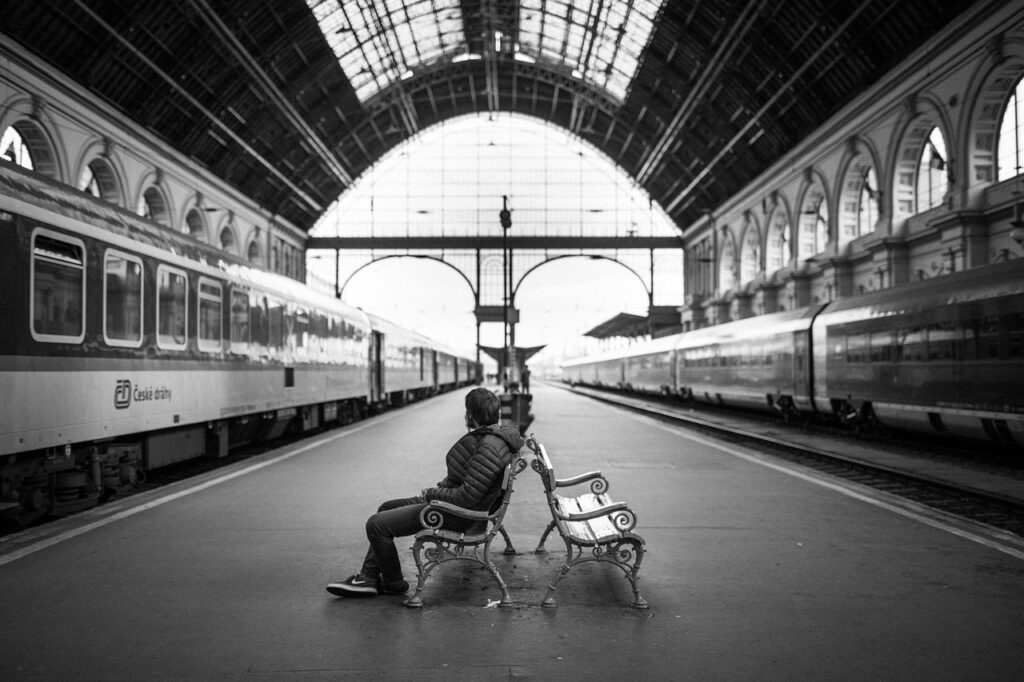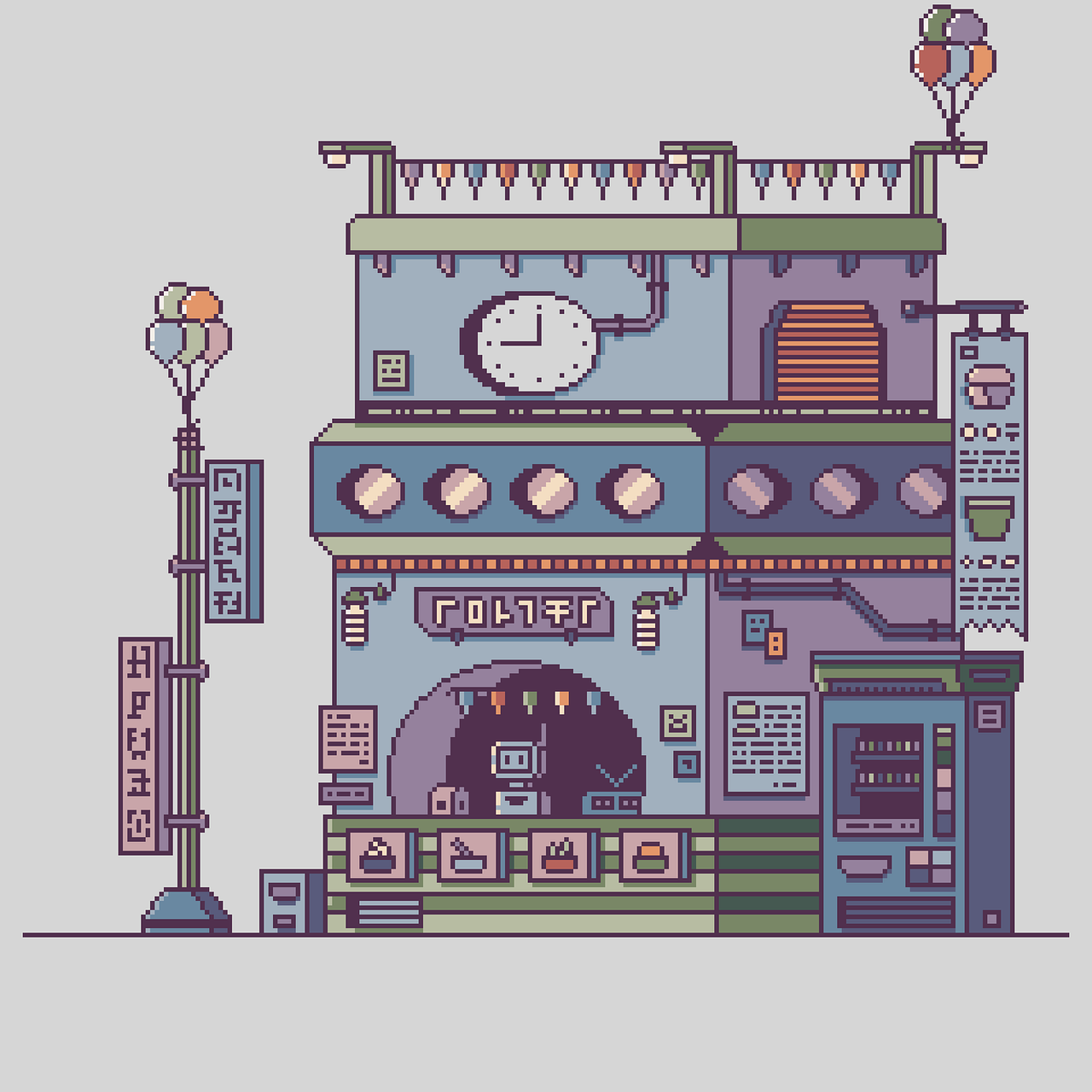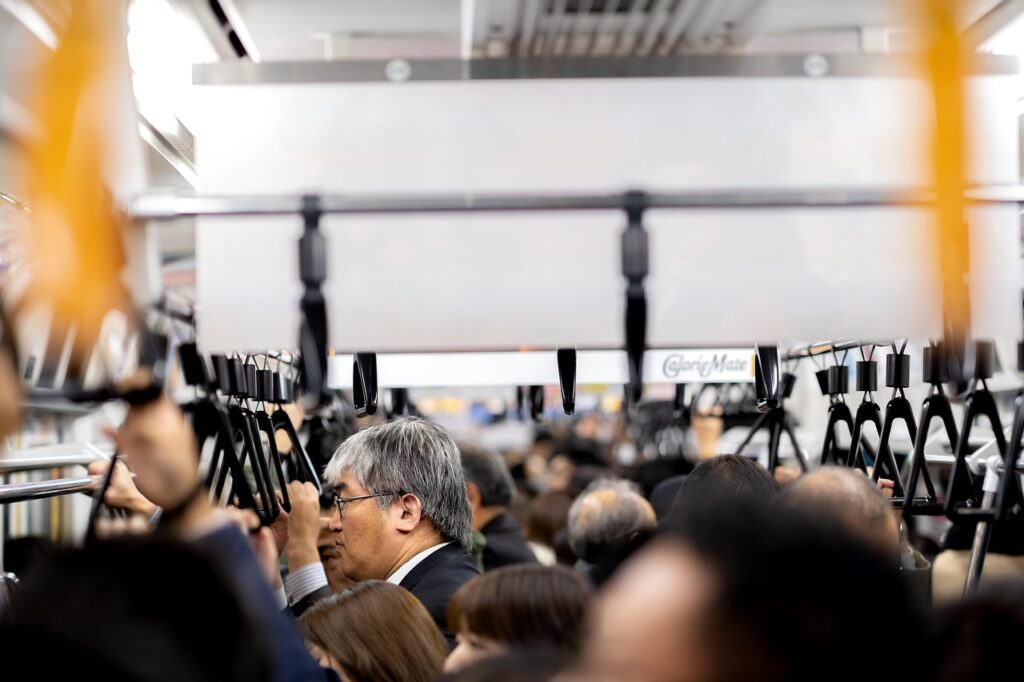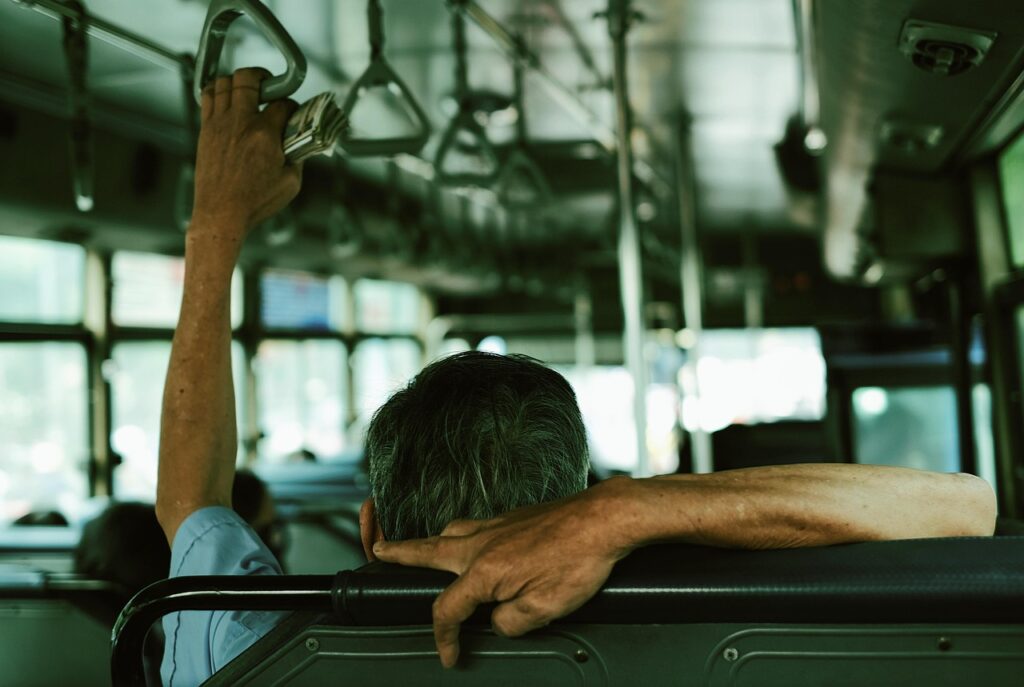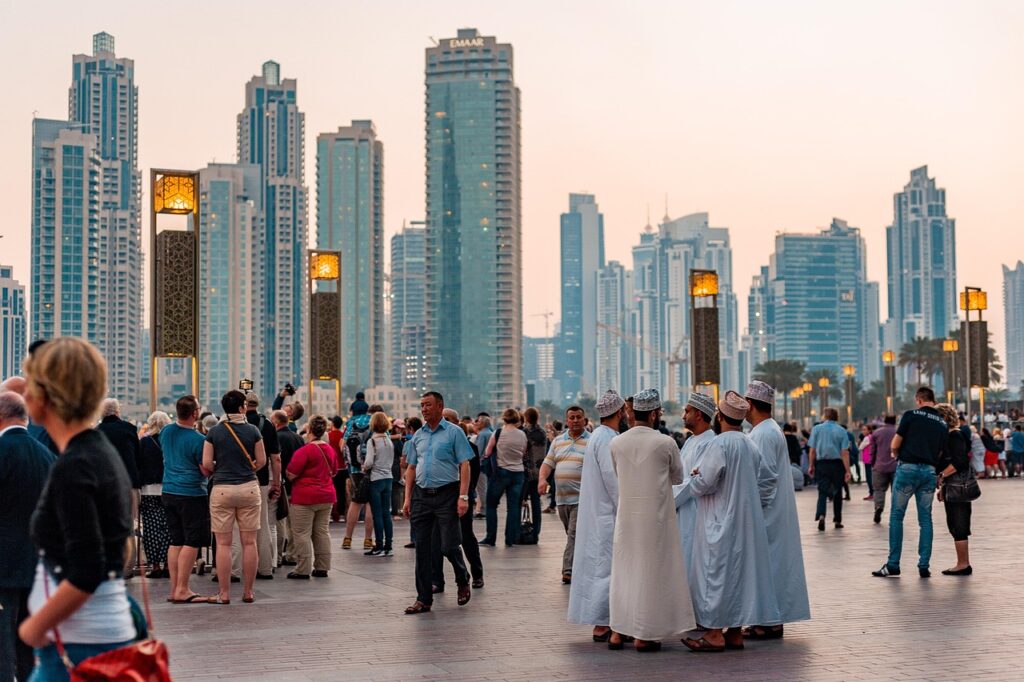Public transportation is a cornerstone of our modern civilization, a testament to collective effort and smart planning. It offers an efficient, environmentally friendly way to navigate our cities, reducing traffic and benefiting everyone—even those who don’t use it. Buses and trains connect us, bringing together people from all walks of life, regardless of gender, race, or social status. It’s a system designed to work for all, and its success truly hinges on our collective commitment to making it a pleasant experience for every single person on board.
Yet, as wonderful as mass transit is, it only takes one person to inadvertently disrupt the harmony and ruin the ride for everyone else. We’ve all experienced these minor inconveniences that escalate into genuine irritation, simply because a few unspoken rules of public conduct are overlooked. These aren’t just minor annoyances; they’re moments that can slow down the entire system, create discomfort, and chip away at the civility of our shared journey.
This guide aims to spotlight some of the most common transit faux pas, drawing from real-world experiences. By understanding these seemingly small actions, we can collectively foster a more considerate and efficient transit environment for all, turning potential irritations into opportunities for smoother, more enjoyable travel. So, let’s explore these common missteps and discover how a little awareness can make a big difference on your next ride!

1. **Ignoring the “Go Before You Go” Rule**The timeless wisdom of “Go before you go!” holds profound relevance for public transit users. Planning ahead for personal needs, particularly bathroom breaks, is crucial not only for your comfort but also for the health and well-being of everyone around you. An unfortunate incident on board, such as urination or defecation, immediately creates a “biohazard” and necessitates taking the vehicle out of service, causing significant travel delays for countless others.
While some commuter trains, like Caltrain, and inter-city services, such as Amtrak, often provide onboard restrooms, many public transit buses and light rail trains do not. This makes proactive planning essential. Before your journey, consider visiting publicly accessible restrooms at hospitals, libraries, shopping malls, parks, or even city halls during open hours. Smartphone apps can also help locate nearby facilities, providing a practical solution to avoid discomfort and disruption.
For those traveling with children, ensure their diapers are changed beforehand and carry a spare. If a change is necessary on transit, always take the dirty diaper with you for proper disposal in a trash can once you alight. Leaving soiled items on a bus or train is a significant breach of etiquette and a health concern. Being responsible for your personal needs, and those of your dependents, demonstrates respect for your fellow passengers and upholds the integrity of our shared transit system.
2. **Blocking Lines at Fare Gates and Vending Machines**We’ve all faced the frustration of being held up at ticket turnstiles, Clipper Card readers, or vending machines by someone unprepared. This common scenario, while seemingly minor, can cause significant friction and contribute to overall system delays during peak travel times. The key to avoiding this misstep is simple preparedness.
Instead of fumbling for your ticket, fare money, or Clipper Card at the front of the line, take a moment to step to the side. Collect everything you need, have your fare ready, and then join the line from the rear. This small act of consideration allows the queue to keep moving smoothly, benefiting everyone behind you. Blocking the line, even briefly, creates a cascade effect that slows down boarding, impacts departure times, and can lead to missed connections for other riders.
Mass transit thrives on efficiency, and every moment counts, especially when many people access the system simultaneously. By simply being ready with your fare before you reach the front, you contribute to a more efficient flow, demonstrating respect for both your fellow passengers and the transit system’s operational rhythm. It’s a simple courtesy that significantly enhances the travel experience for all.

3. **Disregarding Others with Unwanted Smoke and Vapors**For many, smoking, “puffing,” “toking,” or “vaping” is a personal choice, but in public spaces like transit facilities, it becomes a matter of public courtesy and health. The air we breathe is shared, and what might be a relaxing habit for one can be an irritant or health trigger for another, especially individuals with respiratory problems or allergies.
When at a bus stop, train station, or transit center, consider the well-being of those around you. Smoke and vapor carry odors and chemicals that affect others. The guideline is clear: if you must engage in these activities, do so as far away from others as possible, ideally positioning yourself “downwind” to minimize exposure. This isn’t about judgment; it’s about mutual respect in a shared public environment.
Remember, you are utilizing public transportation to or from a public facility. These spaces are for everyone, and ensuring a healthy, pleasant environment means being mindful of what we introduce into that shared air. A small adjustment in your location can make a world of difference for a fellow commuter, allowing them to breathe easy and enjoy their journey without unwanted interference. It’s a simple yet powerful way to show consideration for the diverse community that relies on transit.

4. **Obstructing Exits and Entrances on Platforms and Stairs**The flow of people through train stations and transit centers is a delicate ballet of movement, especially during busy hours. One common disruption is when individuals block pathways, whether on escalators, stairs, elevators, turnstile gates, or directly in front of bus or train doors. This impedes efficient movement for everyone.
On escalators, the universal rule is to “stand to the right so people can pass on the left as needed.” Blocking the left side or standing in the middle creates a bottleneck, slowing down the entire system and potentially causing delays. Similarly, standing directly in front of vehicle doors as they open prevents swift boarding and alighting. Even if you’re not in a rush, someone else likely is, and your obstruction can lead to missed connections.
By simply standing to one side, you create a clear path for others to exit efficiently, and you’ll get on sooner yourself. This allows the bus or train to depart more quickly, staying on schedule. It’s a small, thoughtful gesture that significantly impacts the overall efficiency of public transit. Making space and allowing for clear movement is a cornerstone of good commuter etiquette, contributing to a smoother, more reliable experience for every traveler.
5. **Failing to Yield to Alighting Passengers Before Boarding**This classic faux pas, where people rush to board before allowing others to exit, creates unnecessary congestion and awkward encounters, actively slowing down the entire process. Imagine trying to disembark with bags or a stroller, only to face a surge of people pushing to get on. This creates a physical barrier, forcing alighting passengers to struggle through.
The simple, golden rule is to “let people off the vehicle first.” This means stepping aside from the door, creating a clear pathway for disembarking passengers. Only after they have fully alighted should you begin to board. This courtesy is vital for efficiency and safety, especially for seniors, individuals with disabilities, or pregnant women who may need more time and space.
Extending this courtesy ensures the vehicle empties faster, allowing new passengers to board without obstruction. It demonstrates a higher level of civic consideration, making the journey smoother and more pleasant for everyone. A smooth flow of passengers, both on and off, keeps the system moving on time and enhances the overall public transit experience.
6. **Neglecting Priority Seating for Vulnerable Passengers**Designated seats on buses and trains, often near doors, are reserved for seniors, individuals with disabilities, and pregnant women. These are not mere suggestions but crucial provisions for their comfort, safety, and accessibility. Occupying these seats when not in need, while others stand, is a significant faux pas that undermines the inclusive spirit of our transit systems.
When occupying a priority seat, be mindful of who boards. If someone clearly falls into one of these categories, the responsible action is to offer your seat. A simple offer, perhaps with eye contact, makes a profound difference, easing their journey and affirming their place in the community. These seats are strategically located for ease of access and disembarkation, minimizing the need for vulnerable passengers to navigate crowded aisles.
Public transit is for everyone, and ensuring its accessibility and comfort is a shared responsibility. Your act of kindness notens a positive example but also contributes to a more compassionate public space. Let’s make it a habit to look around and extend this simple yet powerful courtesy to those who truly depend on it, reinforcing the idea that public transit is a system built on mutual support and respect.
7. **Congregating at Doors Instead of Moving to the Center**One of the most frequent and easily avoidable transit faux pas impacting passenger flow is the tendency to gather at entrance/exit doors rather than moving further into the vehicle. This creates a bottleneck, hindering new passengers from boarding and existing ones from alighting, leading to delays and unnecessary crowding.
When boarding, especially during busy rush hours, the most helpful action is to move towards the center or rear of the bus or train. This clears the door area, allowing more people to board quickly and efficiently. It’s a simple logistical adjustment that significantly improves the overall speed and comfort of the journey for everyone. A wall of people at the doors impedes movement, creating frustration for those trying to get on or off.
Moving further inside isn’t just about politeness; it’s about practical efficiency. Often, there’s ample space in the middle or back of the vehicle, sometimes even empty seats, that go unused because people don’t move past the immediate entrance. Distributing yourselves more evenly throughout the vehicle creates a more balanced and comfortable environment, ensuring swift and seamless boarding and alighting processes. It’s a simple yet effective way to ensure everyone gets to their destinations on time.

8. **Hogging More Space Than Necessary with Personal Belongings**It’s a common sight on public transit: bags, backpacks, or other personal items spread across an adjacent seat, piled on the floor in front of another, or even still worn while seated, effectively claiming more space than a single passenger is entitled to. This seemingly minor oversight can create significant discomfort and frustration for fellow riders, especially when the vehicle is crowded during peak commute hours. Public transportation thrives on shared space, and every square inch counts when everyone is trying to get to their destination.
During weekday rush hours, typically from 6 AM to 9 AM and 4 PM to 7 PM, the challenge of limited space becomes particularly acute. When a bus or train car fills to capacity, leaving personal items on an empty seat or allowing them to sprawl into the aisle directly impacts the number of people who can comfortably, or even safely, board. It forces standing passengers to squeeze into tight corners or stand uncomfortably close, diminishing the overall travel experience for everyone.
Thankfully, there are simple and effective ways to be a more considerate commuter. One excellent solution is to place your bag or backpack between your legs, keeping it close to your body and off the seat next to you. If your bag is smaller and fits easily, tucking it neatly underneath your seat is another fantastic option. These small adjustments instantly free up valuable space, allowing another passenger to sit down and reducing congestion in the aisles.
Adopting these easy habits demonstrates respect for your fellow riders and contributes positively to the collective transit experience. It’s not just about politeness; it’s about making the system work more efficiently for all. By managing your personal items thoughtfully, you help ensure that public transit remains an accessible and comfortable option for every member of the community.

9. **Letting Wet Umbrellas Drip on Other Riders or Seats**Rainy days often bring a unique set of challenges to public transit, and one that frequently goes overlooked is the wet umbrella. After stepping in from a downpour, it’s easy to forget that your dripping umbrella can become a nuisance, or even a minor hazard, for those around you. Water dripping onto someone’s clothes, bag, or an empty seat is not only uncomfortable but also a sign of thoughtlessness in a shared environment.
The continuous drip of water can quickly make seats damp and unpleasant for others to use, or worse, soak a fellow passenger’s belongings. This creates an unnecessary hassle and diminishes the comfort of the journey. While inclement weather is beyond our control, how we manage our wet belongings certainly isn’t, and a little forethought can prevent these small irritations from escalating into genuine annoyances for others.
To avoid this common faux pas, consider where your umbrella is positioned as you settle into your seat. A practical solution is to place your umbrella between your legs or tuck it carefully underneath your seat. This keeps the water contained and off of public seating and other passengers. Some commuters even carry a small plastic bag specifically for their wet umbrella, offering an extra layer of protection for everyone’s comfort.
These mindful actions ensure that you’re not inadvertently creating a damp and uncomfortable situation for your fellow travelers. A dry, clean environment contributes significantly to a more pleasant and respectful transit experience for the entire community, making rainy day commutes just a little bit brighter for everyone on board.

10. **Blocking Aisles and Exits with Strollers**Traveling with children on public transit is a wonderful way to navigate the city, but it comes with a particular responsibility regarding stroller management. A stroller, while indispensable for parents, can inadvertently become a significant obstacle if not handled with care. Leaving a stroller unfolded and positioned in the aisle can obstruct the flow of passengers, create safety risks, and impede the efficiency of boarding and alighting processes for everyone.
When aisles are blocked, it becomes difficult for passengers to move freely, whether they are searching for a seat, trying to reach an exit, or simply navigating the vehicle. This is especially problematic for individuals with disabilities, seniors, or those carrying bags, who rely on clear pathways for their safety and ease of movement. Such obstructions can cause delays, as people struggle to get on or off the bus or train, potentially holding up the entire schedule.
The good news is that these challenges are easily overcome with a bit of planning and consideration. If you are traveling with a stroller, the most courteous and efficient action is to fold it whenever possible, especially during busy times. Once folded, it can often be tucked neatly underneath your seat or held securely out of the main thoroughfare. This simple act immediately frees up crucial aisle space, allowing for smoother passenger movement.
For parents who frequently use public transit, investing in a folding stroller can be a game-changer. These compact options are designed to simplify your journey, making it easier to maneuver and store, thereby enhancing the travel experience not just for you and your child, but for all your fellow passengers. Prioritizing clear aisles ensures that public transit remains accessible, safe, and efficient for every traveler on board.
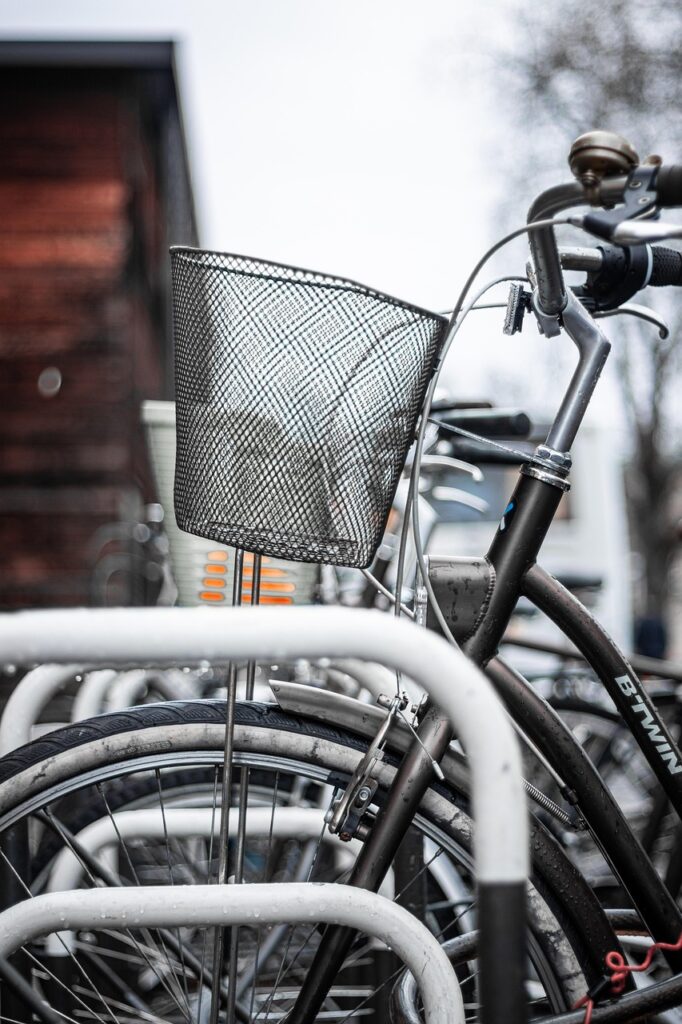
11. **Improperly Storing Bicycles or Blocking Aisles with Them**Bicycles are a fantastic complement to public transit, offering a convenient way to extend your journey beyond the immediate reach of bus stops or train stations. Many transit systems are bicycle-friendly, encouraging multi-modal travel. However, it’s essential for cyclists to understand and adhere to the specific rules for bringing bikes on board to ensure safety and maintain clear pathways for all passengers. Improperly stored bicycles can obstruct aisles, block doors, and create tripping hazards.
On buses, the protocol is typically clear: utilize the bicycle rack located at the front of the vehicle. Before boarding, always notify the bus driver that you’ll be using the rack, and do the same before alighting for safe retrieval. If the front bike rack is full, ask the driver if there’s space toward the back. Always seek guidance and follow their instructions, ensuring your bicycle does not impede aisles or exits for other passengers.
For commuter train services, such as Caltrain, the system is often designed with cyclists in mind, featuring special cars specifically dedicated to storing and securing bicycles. These designated areas are key to a smooth journey for everyone. Similarly, on light rail systems like VTA, look for the bike racks usually positioned at the center of each car.
If dedicated racks are full or if your bicycle is too large for the available space on light rail, you might be able to carefully place it underneath your seat or next to the door, against the aisle-facing seats. However, the paramount rule remains: ensure aisles are consistently clear for others to board, alight, and move. For frequent light rail cyclists, a folding bicycle is a practical investment, simplifying transit and maximizing space. Adhering to these guidelines ensures a harmonious and efficient journey for every commuter.
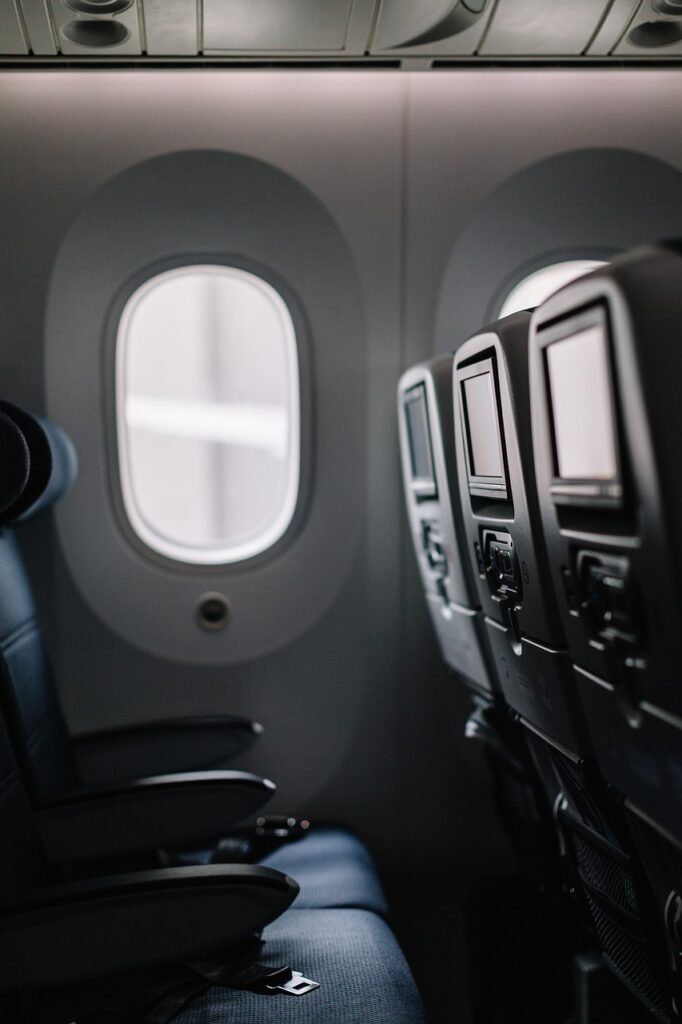
12. **Claiming Two Seats by Sitting in the Aisle Seat Alone**The unspoken rule of public transit is “one person, one fare, one seat.” Yet, a common and often irritating faux pas occurs when a single passenger occupies the aisle seat, deliberately leaving the window seat empty, particularly during crowded periods. This simple act effectively claims two seats for the price of one, forcing other riders to either stand or awkwardly ask to be let into the window seat, creating an unnecessary social hurdle.
This practice is not just an inconvenience; it’s a subtle yet clear sign of disregard for fellow commuters who might be looking for a place to sit. On a busy bus or train, every available seat is precious, and deliberately withholding one out of a desire for extra personal space undermines the spirit of shared public transportation. It compels others to navigate a potentially uncomfortable interaction just to find a spot, which can feel challenging for many.
The solution to this common dilemma is remarkably simple, benefiting both the seated passenger and those seeking a spot. If you find yourself in the aisle seat with an empty window seat next to you on a crowded vehicle, consider moving over to the window. This proactive gesture invites others to sit down without having to ask. If you are the person looking for a seat and encounter this situation, a polite, “Excuse me, please!” as you make your way to the window seat is usually all it takes to resolve the situation smoothly.
By embracing the “one person, one seat” principle, we contribute to a more welcoming and efficient transit environment. It fosters a sense of mutual respect and makes the experience of finding a seat far less daunting for everyone. This small act of consideration goes a long way in ensuring that public transit remains a comfortable and equitable space for all members of the commuting community.
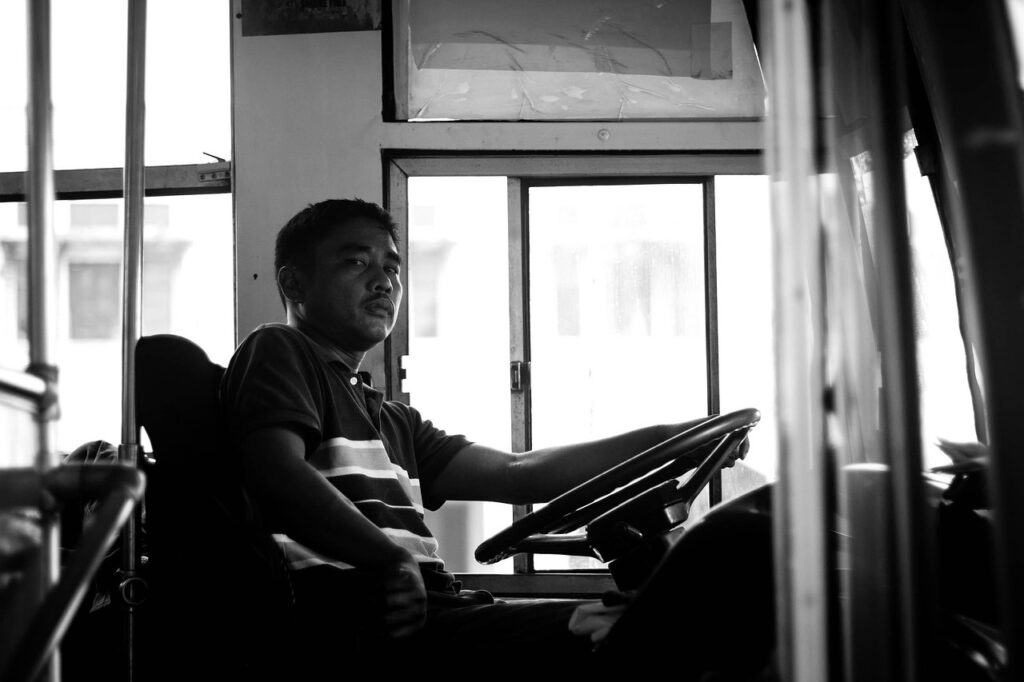
13. **Engaging in Excessive or Disruptive Interactions with Operators**Bus drivers and train operators play a critical role in our daily commutes, bearing the significant responsibility of safely and punctually transporting hundreds, if not thousands, of passengers. Their primary focus must always be on operating the vehicle, navigating traffic, adhering to schedules, and ensuring the safety of everyone on board. Engaging them in lengthy conversations or unnecessary “small talk” can divert their attention, potentially compromising safety and causing delays.
While transit workers are generally happy to provide basic, essential information, it’s a mark of a considerate commuter to seek out non-urgent details before your journey begins. Many transit agencies offer comprehensive websites, mobile apps, or customer service lines where you can find schedules, route information, and fare details. By getting this information ahead of time, you help minimize distractions for the operator, allowing them to concentrate fully on their important duties and keep the entire system running smoothly and on time.
Moreover, stressful situations can sometimes lead to disagreements, particularly concerning fares or routes. It’s human nature to feel frustrated, but engaging in a verbal dispute with an operator on board is highly counterproductive and disrupts the peace for everyone. Yelling, making intimidating gestures, or, in extreme cases, spitting, is never acceptable and only escalates the situation, painting you as the aggressor.
If a disagreement arises, the most effective approach is to remain calm and politely ask for clarification. If a resolution isn’t immediately possible, consider paying the full adult fare to continue your journey, noting the operator’s badge number, and contacting the transit agency later with your concerns. Alternatively, if feasible, stepping off and waiting for the next vehicle avoids holding up other passengers. Prioritizing calm and resolution not only reflects well on you but also ensures other commuters aren’t needlessly delayed by a personal dispute.
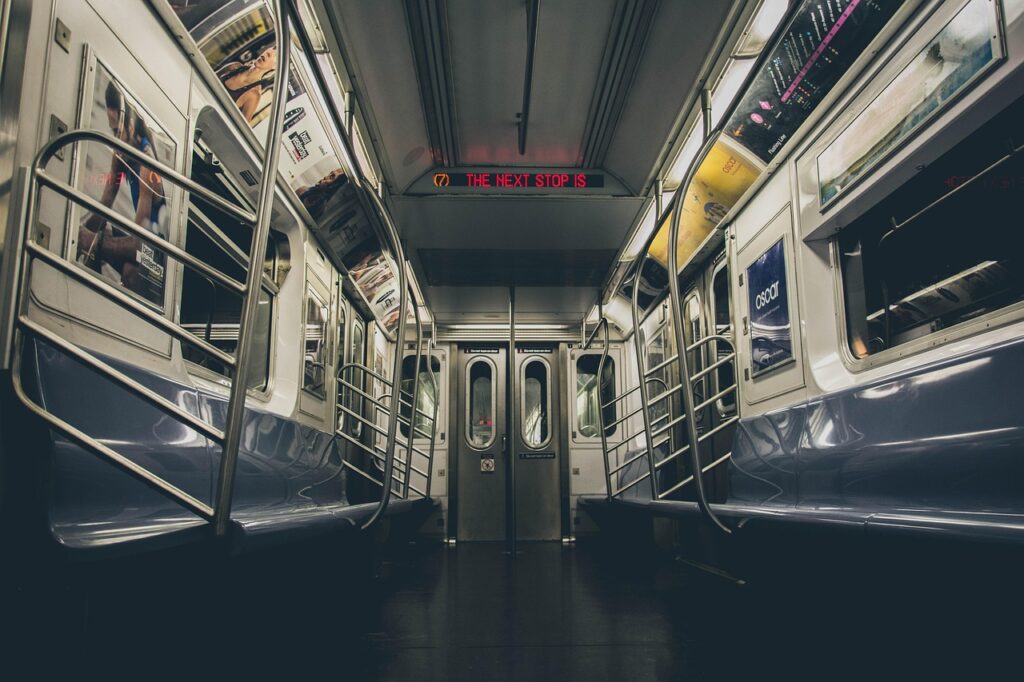
14. **Engaging in Loud or Lengthy Phone Conversations**In the close quarters of a public transit vehicle, your cell phone or smartphone can quickly become a source of annoyance if not used considerately. One of the most common and easily avoidable faux pas is engaging in loud or excessively long phone conversations. While a quick, urgent call might be necessary, forcing fellow passengers to overhear your personal details or endure a loud monologue is a clear breach of shared space etiquette, as others are “trapped” next to you and your voice can easily become an unwelcome intrusion.
There’s an art to making polite phone calls on transit. For brief, urgent messages, try cupping your hand over your mouth and the phone’s receiver to modulate your volume. Short, essential check-ins like, “Did Dad get to the hospital all right?” or “I’m on the train, so you can pick me up at seven,” are understandable. The key is to be concise and keep your voice low, ensuring your conversation remains as private as possible in a public setting.
However, the line is crossed when conversations become lengthy, loud, or delve into highly personal matters. Your private business should remain just that – private. No one should feel compelled to wear earplugs or headphones simply to avoid being an unwilling participant in your call. It disrupts the quiet contemplation or relaxation of others, transforming a shared journey into an uncomfortable eavesdropping experience.
If you find yourself in an area with poor phone reception, or if your voice naturally carries and you struggle to speak quietly, it’s often best to defer the call altogether. Instead, consider sending a text message, which is far less intrusive. The most considerate option, whenever possible, is to wait until you have alighted from the bus or train before making or answering any non-essential phone calls. This simple act of awareness significantly enhances the onboard experience for everyone, fostering a more peaceful and respectful environment.
***
As we wrap up this comprehensive look at transit etiquette, it’s clear that a smoother, more enjoyable public transportation experience for everyone hinges on our collective awareness and consideration. These common faux pas, from thoughtless use of space to disruptive phone calls, are not intentional acts of malice but often arise from a simple lack of awareness or a momentary lapse in mindfulness. Yet, by understanding their impact and embracing these straightforward solutions, we empower ourselves to transform daily commutes.
Read more about: Spill the Beans! What Your Starbucks Order Says About Your Personality, Backed by Science (and Barista Secrets!)
Public transit is more than just a means to an end; it’s a shared community space where diverse individuals converge. Let’s make it a place of mutual respect and efficiency, where small acts of courtesy create significant positive ripples. By embodying these principles, we don’t just avoid being ‘that commuter’; we become the commuters who elevate the journey for all, making every ride a testament to our shared civility.

